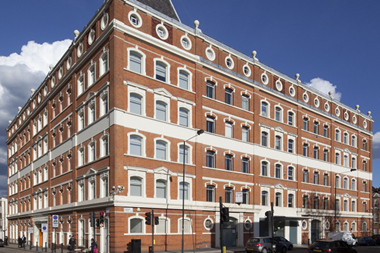Chaos theory states that “something as small as the flutter of a butterfly’s wing can ultimately cause a typhoon half way around the world”. Less dramatically put, one cause can have many effects.

Emerging technologies are a case in point. Emails, mobile phones and wifi have facilitated flexible working for this era’s workforce.
Millennials entering work now see flexible working as the new norm. Creative, flexible workspaces are becoming an expectation and are increasingly favoured to the fixed workstation.
This change in working habits manifests itself in two trends. These are the rise of co-working and new creative space within traditional offices. Perhaps the most notable change in the structure of the workplace in recent years has been the rise of co-working.
A forecast from SmallBusiness.com projected that by 2020 there will be 26,000 co-working locations, with 3.8 million people. WeWork alone has more than 50,000 members and is valued at more than $15bn. As co-working operators expand to new locations, it is not inconceivable to imagine the balance tipping further this way.
While start-ups and SMEs remain an important part of occupier demand for co-working spaces, the sector is also increasingly appealing to larger companies seeking flexible project space. Established businesses are using co-working space to attract talent while benefiting from networking. For example, KPMG recently exchanged Canary Wharf for Camden Market, moving a small team of young employees who work with start-ups.
Organisations that want to be disruptive in traditional industries are quickly realising they need to surround themselves with start-ups if they want to be seen as challenging the status quo. Co-working space can facilitate this.
A recent paper from Aviva notes providers of co-working spaces have devised an all-inclusive billing method to remove the rigmarole of organising security, reception and cleaning services. While serviced office space can seem more expensive than leased space, tenants increasingly value flexible lease structures.
Regions will follow
Alongside co-working spaces - perhaps as a result of pressure from these new, creative spaces - traditional offices are also undergoing a makeover. There is increased pressure on businesses to give employees flexibility on where, when and the hours they work.
This is affecting the way business owners approach their search for space. Particularly in London, employers take on office space without sufficient desk space for each employee, on the assumption a number will work remotely on any given day. The regions will follow.
Hybrid environments that provide open spaces and areas to allow silent retreat into more focused, productive work are also increasingly popular.
Offices must be better diversified to suit tenants’ needs
Landlords can no longer buy an office block and lease it to tenants without any input. Offices and business parks must be better diversified to suit tenants’ needs and offer imaginative mixed-use environments that cater to flexible working.
One example of a creative workspace is Clearbell’s Lingfield Point in Darlington. This boasts creative spaces with services including a nursery and cycle route. The office space allows for flexible working, with a range of services offered on site.
Demand for sites such as Lingfield Point, which provide employees with more than just desks and storage space, will only increase as tenants become more discerning.
As chaos theory predicts, one cause can have many effects. Few would have imagined the internet would dramatically revolutionise so many fields. Fewer still would have predicted the technological revolution may have as much significance for commercial real estate as it did for the likes of Microsoft and Apple.






























No comments yet